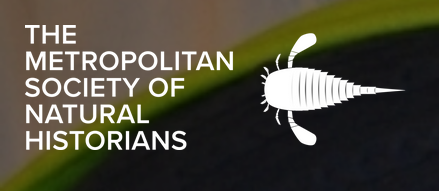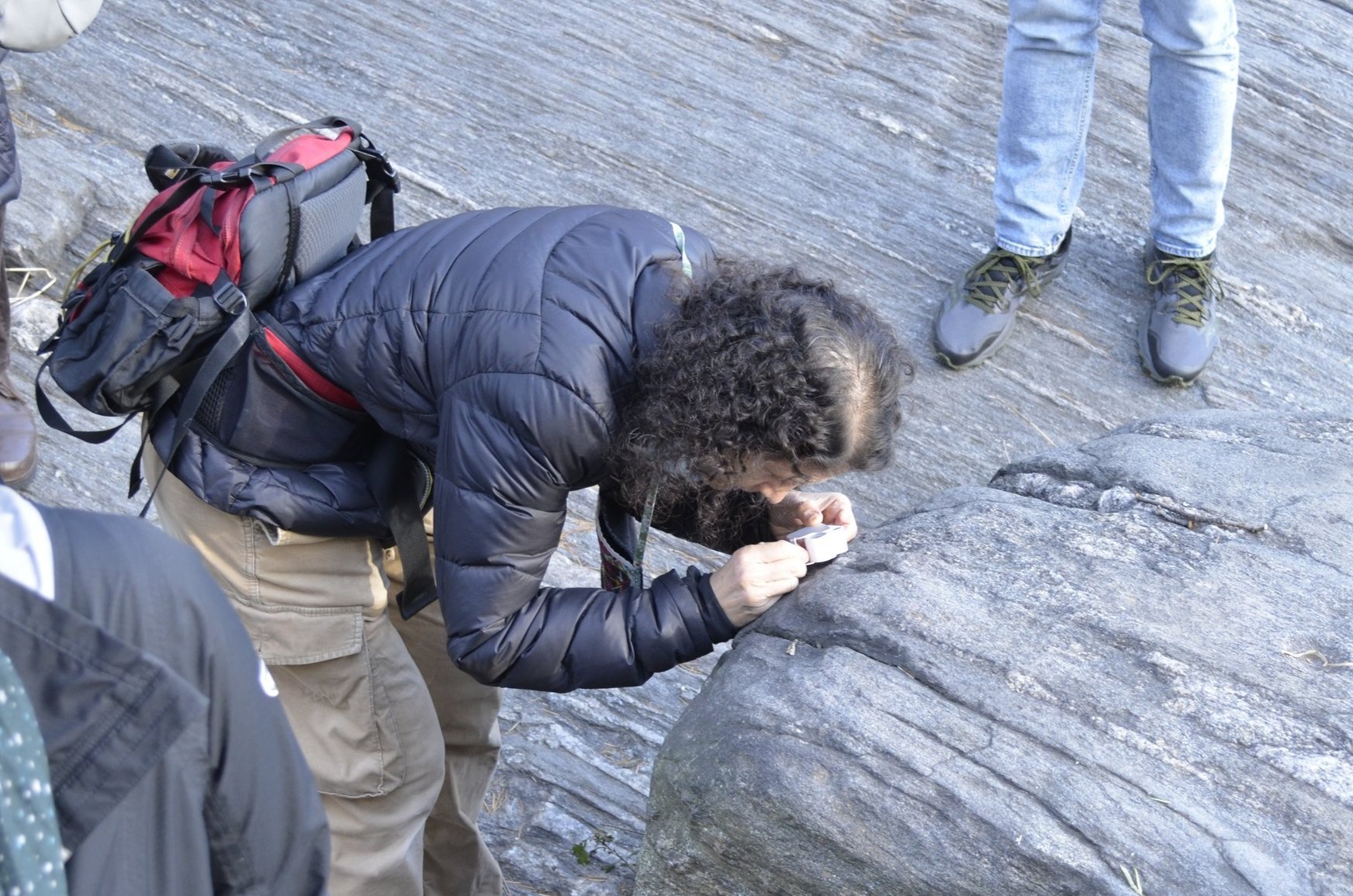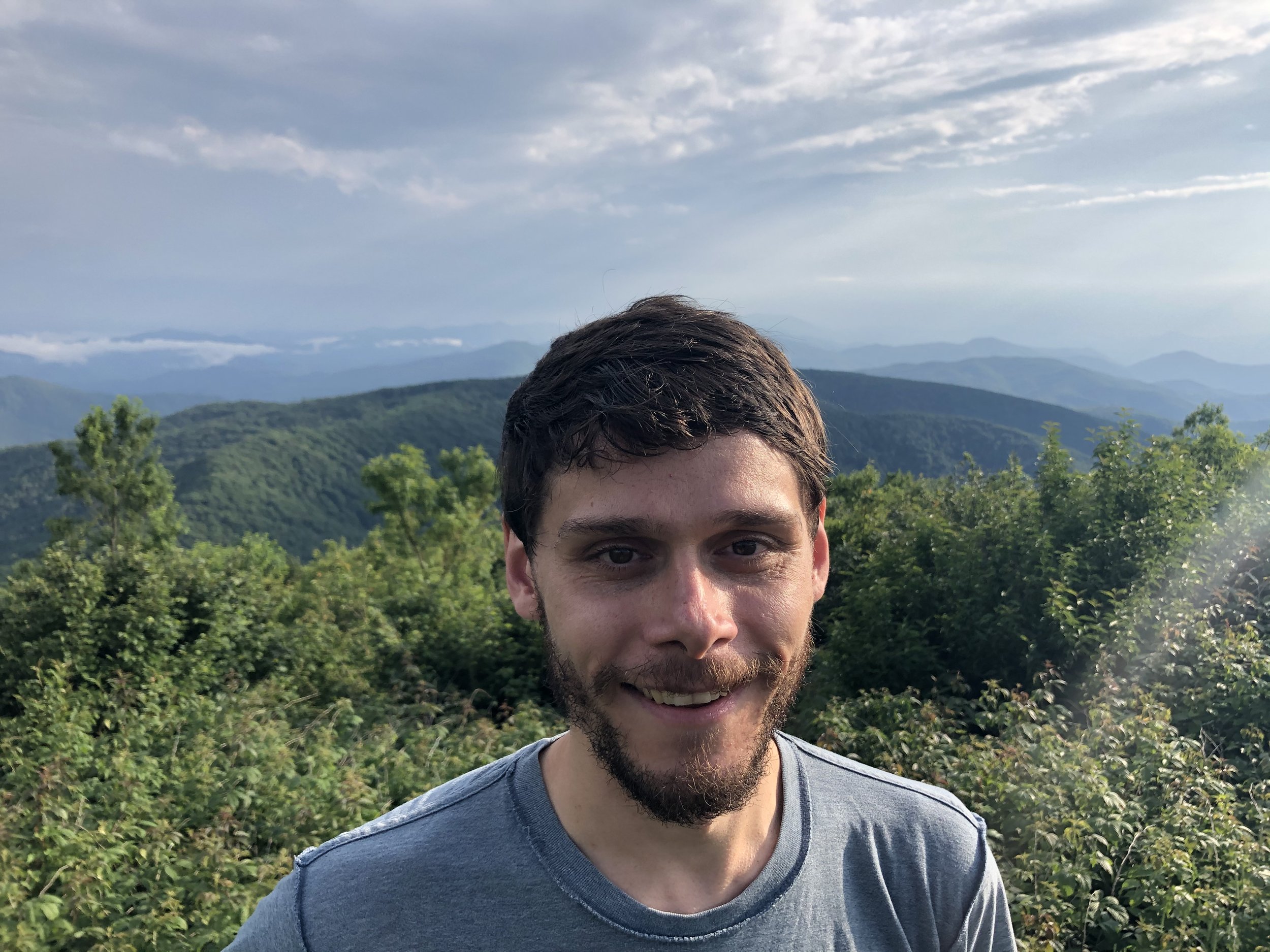On a delightfully sunny Sunday, on the 21st of November 2021, the MSNH was delighted to meet after many months of social distancing in person. Here, we came together to explore the lichen community of Central Park under the most excellent and cheerful guidance of Dr. James Lendemer and Amanda Chandler from the New York Botanical Garden. After moments of re-connecting (“so good to see you again!”), the excited twenty plus group walked for about 10 m, before having our first stop at a tall tree. On the way, we learned that our very own Charlie Zorn and Jennifer Bae got married during the pandemic. While they met outside of the society, the many events they attended together must have surely brought them together! Congratulations!
Once we reached the tree, nobody had to look up much, as our eyes were all glued to the Common Candle Flame (Candelaria concolor), a yellow lichen, growing at the base of the tree. “One of our most common lichens”, as Dr. Lendemer pointed out. So, what are lichen? A lichen is an organism, formed by multiple members: a fungus, which gives the lichens its shape and protects the algae and/or cyanobacteria inside, which in turn provide nutrients in form of sugar to the fungus. A guest photographer, Dr. Elise Morton (Fairleigh Dickinson University), continued to take pictures of all creatures great and small, while we learned more about the wonderful world of lichen.
Lichens can form a variety of shapes, most commonly foliose (“leaf like, with an upper and lower surface”), crustose (“crusty, cannot be removed”), and fruticose (“like a tiny shrub”). As lichens live only from what the atmosphere and their partner can provide, they are famously sensitive to air pollution. Consequently, during the 1980’s, lichens were a rare sighting in Central Park and elsewhere in the city…with tighter regulations, lichen could yet grow again and can now be found on rocks of the sidewalk, which was our second spot…a few meters further in. Here, we could see the crustose sidewalk fire dot lichen of the genus Caloplaca (C. feracissima). There we learned that lichen fix nitrogen, retain moisture, create soil and thus are important pioneer species, which can endure a lot of stress, besides air pollution. “And the constant rubbing of rock-resting New Yorkers”, James added.
Could one eat lichens? Some lichens are eaten, but not necessarily by humans, at least not on a regular basis. However, other mammals, like the reindeer (Rangifer tarandus) in the far north are highly dependent on it. While it does not provide much nutrients beyond carbohydrates, it’s certainly better than dying of starvation during the cold and long winter days, when little else grows. Back to Central Park. The next lichen we were able to find was the foliose, greenish Common Greenshield Lichen (Flavoparmelia caperata). Another very common lichen, this sun loving species, can be found on tree trunks (another closely related species grows on rocks, Flavoparmelia baltimorensis). Amongst it, we found another astonishing creature: a lacewing larva (Chrysoperla sp.), which uses pieces of dust lichens (Lepraria) and places it on its back, presumably for camouflage.
While looking at the Common Greenshield, we were told that a lichen might look just like one “individual”, however, recent research shows that one lichen can contain several individuals, which grow together, allowing for an easier way to exchange genes. Distance matters in non-mobile organisms! Our walk continued to a rock, which was full of another common species, the Common Grey Lichen (Physcia thomsoniana). Like for so many species, little fragments breaking off this lichen will continue to grow when finding the appropriate substrate. Thus, many lichens appear to grow downwards, “like a cascade”. Before finding a sister species (Physcia millegrana) on a nearby tree, James and Amanda were excited to find no one else but Dimelaena oreina, or golden moonglow lichen. As it was dry, the lichen did not provide much of the promised moonshine color, but provided us with the opportunity to say “Thank you” to two wonderful guides through our first in-person outing. Thank you, James and Amanda, and thank you to all of the participants – how wonderful to see you all again. Until soon!
To view more photos from this event, please visit our gallery! All photo credit goes to Elise Morton and Jennifer Bae!
NOTE: Dr. Lendemer and our former vice president, Dr. Jessica Allen published an excellent book on urban lichen – just the perfect gift for any naturalist in our area. You can find it here.
Dr. James Lendemer is an Associate Curator at The New York Botanical Garden where he oversees the largest collection of lichen natural history specimens in the Western Hemisphere. He is also an Assistant Professor at the CUNY Graduate Center where he works with students pursuing careers in botanical science, especially lichenology. Although he has spent more than twenty years exploring lichens in the wild lands of America and abroad, recent collaboration with Dr. Jessica Allen, former vice president of the MSNH, led to urban exploration as well.


